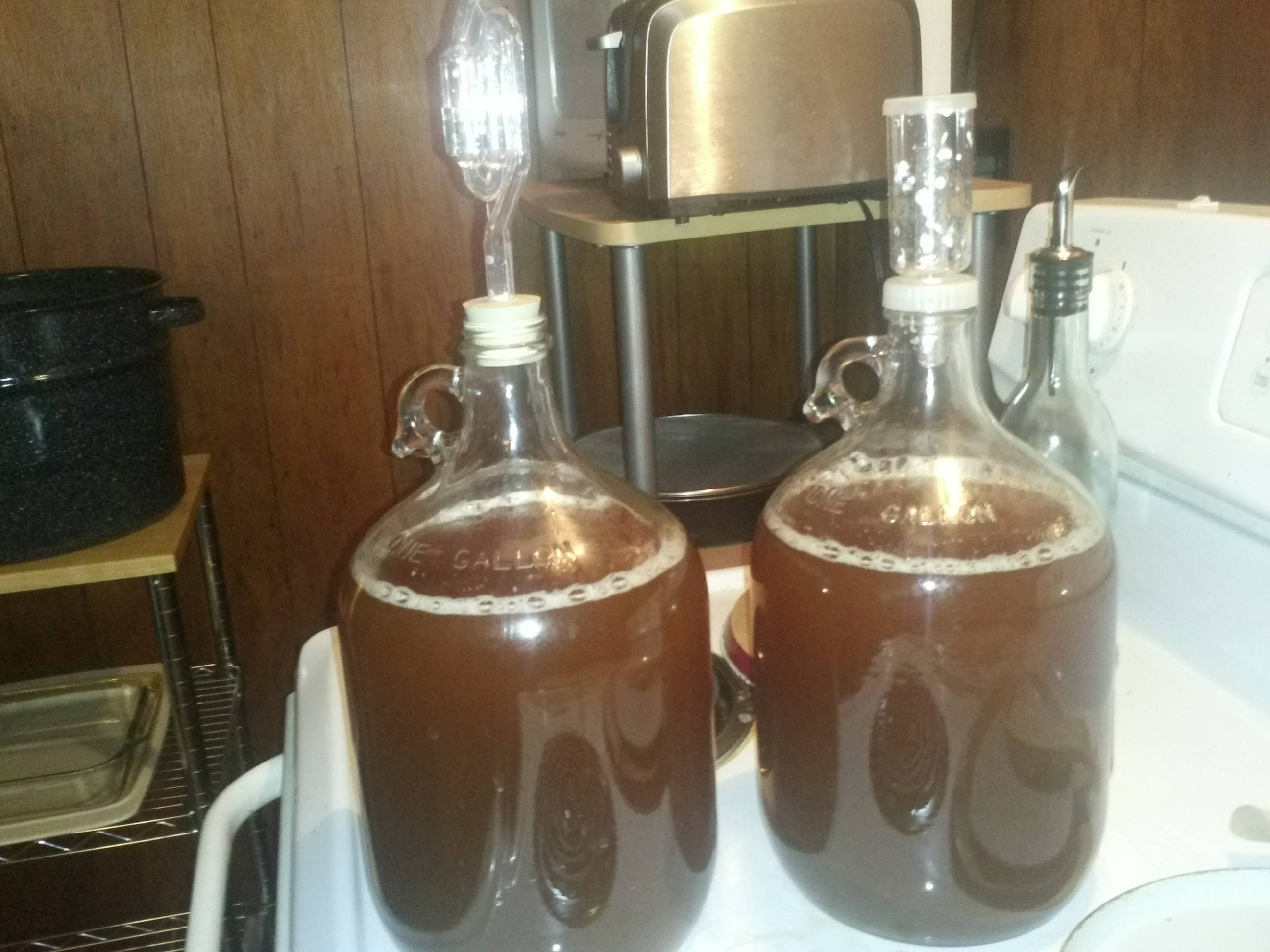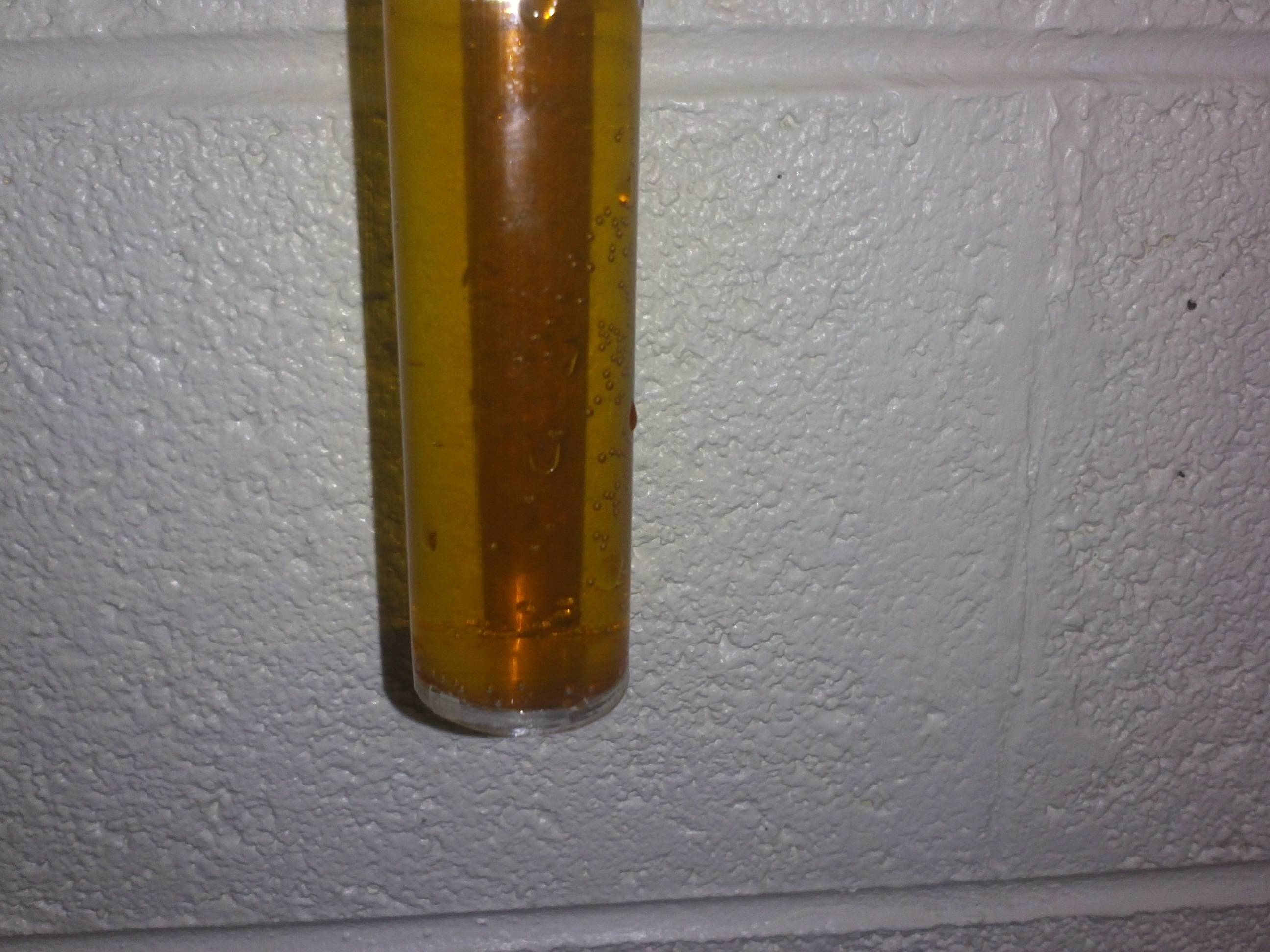BradTheGeek
Well-Known Member
- Joined
- Aug 7, 2013
- Messages
- 169
- Reaction score
- 11
Working on my first batch and was hoping for some input on several questions I have. Before getting to the questions I will give some info on my beer and setup.
I am cheap and poor (but love great beer) and have cobbled this together on a shoestring. The first step was when someone gave me a MR Beer kit. I did my research and saw that they were not great, so before jumping in, I decided to 'adjust' things. Their keg fermenter did not even have an airlock, just slits under the cap for CO2 to escape (and bacteria/wild yeast to get in). So, here is what I did.
I obtained 3-1 gallon glass carboys (only using 2 right now), to use as primary fermenters (not currently using a secondary). Of course I have stoppers and airlocks. I used the Mr Beer Pale Ale hopped extract and their (corn sugar) I believe 'booster'. Without going to get the paperwork, that would give a target of ~4.7abv, which was lower than I wanted, so I added more sugars. I used brown sugar and honey (I later read brown sugar and pale ale may not taste well together, but I will have plenty more batches to experiment with recipes). That brought my approx abv to~5.5-6.5. I did not use the Mr Beer yeast. I pitched safale us-05. After the boil I poured into my carboys and let it bubble away in dark place (in addition I have dark fleece pillowcase with a drawstring around the carboys insulating and protecting them up to the neck)
Fermentation took off quickly, and ran steady for a while. I do not have AC, but air temps have been between 73-80, so not too bad. After a week, I decided to have some fun, and (loose pellet) dry hopped one carboy. Racking that one is going to be fun I am sure, as there are lots of hop particles on top.
It has now been 13 days. On day 12 I took a sample of the non dry hopped carboy as airlock bubbling has all but stopped. Gravity was at 1.018 (1.020 if I corrected for 60deg the right way). Tomorrow I plan to sample again to compare gravity readings (I am reusing bottles and have a capper, and I do not want glass bottle bombs!) I did not sample the hopped carboy as I did not want to disturb the hops, and give them more time to settle/separate, and I did not think that the hopping would affect fermentation rate much/at all.
My questions are thus:
Thanks for any input, and I love this hoppy hobby so far. My next step is to use better extract and partial grain. Next year I may try to grow my own hops in the garden.
Below are a couple of pics, just for fun.
Right after pitching:

A bit of my sample from yesterday:

I am cheap and poor (but love great beer) and have cobbled this together on a shoestring. The first step was when someone gave me a MR Beer kit. I did my research and saw that they were not great, so before jumping in, I decided to 'adjust' things. Their keg fermenter did not even have an airlock, just slits under the cap for CO2 to escape (and bacteria/wild yeast to get in). So, here is what I did.
I obtained 3-1 gallon glass carboys (only using 2 right now), to use as primary fermenters (not currently using a secondary). Of course I have stoppers and airlocks. I used the Mr Beer Pale Ale hopped extract and their (corn sugar) I believe 'booster'. Without going to get the paperwork, that would give a target of ~4.7abv, which was lower than I wanted, so I added more sugars. I used brown sugar and honey (I later read brown sugar and pale ale may not taste well together, but I will have plenty more batches to experiment with recipes). That brought my approx abv to~5.5-6.5. I did not use the Mr Beer yeast. I pitched safale us-05. After the boil I poured into my carboys and let it bubble away in dark place (in addition I have dark fleece pillowcase with a drawstring around the carboys insulating and protecting them up to the neck)
Fermentation took off quickly, and ran steady for a while. I do not have AC, but air temps have been between 73-80, so not too bad. After a week, I decided to have some fun, and (loose pellet) dry hopped one carboy. Racking that one is going to be fun I am sure, as there are lots of hop particles on top.
It has now been 13 days. On day 12 I took a sample of the non dry hopped carboy as airlock bubbling has all but stopped. Gravity was at 1.018 (1.020 if I corrected for 60deg the right way). Tomorrow I plan to sample again to compare gravity readings (I am reusing bottles and have a capper, and I do not want glass bottle bombs!) I did not sample the hopped carboy as I did not want to disturb the hops, and give them more time to settle/separate, and I did not think that the hopping would affect fermentation rate much/at all.
My questions are thus:
- Am I correct in my assumption about hopping not affecting fermentation rate?
- The sample I took did appear to still be fermenting. It was very clear, but there were fine bubbles being generated from the sides of the smple tube, is this a sign that it is not done?
- After testing, I of course tasted the sample. It seemed to taste a bit yeasty (and warm and flat of course), will this wear off after more settling, conditioning, and chilling?
- Will chilling the hopped carboy make the floating particles sink? (I know I should have used a nylon bag, but the ones I had are too big to really fit into a small neck 1 gallon carboy.)
Thanks for any input, and I love this hoppy hobby so far. My next step is to use better extract and partial grain. Next year I may try to grow my own hops in the garden.
Below are a couple of pics, just for fun.
Right after pitching:

A bit of my sample from yesterday:



